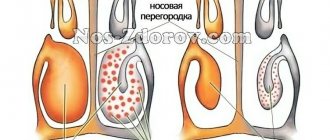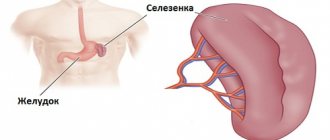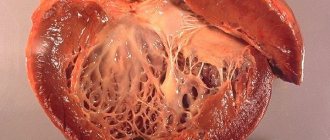Constant malaise, a state when you really want to sleep, although you don’t seem to have gotten up early, fatigue, irritability and apathy are signs of physical rather than psychological disorder. This means that an inexplicable failure occurred in the body, and something went wrong.
Often this condition is accompanied by a headache and the so-called low-grade body temperature: the readings on the thermometer stay at 37.2, 37.3 or 37.5 throughout the day. They can even rise to a level of 37.8 or 38.3-38.5. Sharply throws you into a sweat, then lets go, weakness. Of course, if such symptoms occur, you should consult a doctor rather than reduce the symptoms with antipyretics.
In our material we will talk about when a person has a headache and a temperature of 37 does not go away for days. Staying in this state for a long time leads to undesirable consequences and serious health problems, so it is better to immediately consult a specialist and begin treatment.
For a certain type of people, a general condition in which there is a headache and the temperature does not drop below 37.4 for several weeks is considered normal. In this case, a visit to the doctor brings nothing; the examination does not show any pathologies.
But such patients are rarely encountered in medical practice. Often, if you have a headache and a temperature of 37, it means there is a serious abnormality.
Possible reasons
Myogelosis: causes pain in the neck and back of the head, dizziness. The disease is caused by a change in protein metabolism, when, as a result of improper distribution of the substance, its level increases, and compactions form in the muscles. There is a decrease in vascular permeability, blood supply is disrupted, causing malaise.
Common causes include prolonged physical activity, intense training, hypothermia, stress, uncomfortable back position (staying in a static position for a long time), and incorrect posture.
Encephalitis: inflammation in the brain. It can be primary or independent, caused by damage from viruses, infections, and toxins, as well as secondary: a complication after a cold, flu, measles and other things.
A person infected with encephalitis in the abortifacient form becomes dizzy, feels nauseous and vomits, has a stuffy nose, body aches and fevers, drowsiness, and experiences epileptic seizures, including disturbances of consciousness and coma. It happens when there are no special manifestations. This is an asymptomatic type of disease. There is a slight headache here, there is no strong fever. The lightning-fast form is dangerous. With it, encephalitis develops extremely quickly, when by the evening a person can become much worse, so the main thing is not to waste time.
ENT diseases: these include: sore throat, foreign body in the pharynx, otitis (inflammation in the ear), rhinitis (runny nose) and other pathologies.
Symptoms:
- sore throat and headache temperature 37. Cephalgia is noted in the frontal part or crown;
- “face is burning”;
- discomfort when swallowing;
- the tonsils on the right or left, sometimes on both sides, are noticeably enlarged;
- difficult to speak;
- white coating on the tongue;
- If you have ear problems, it hurts to touch it.
Dysbacteriosis: a pathogenic condition in which the microflora in the intestines is disrupted and the level of beneficial microorganisms decreases. At the same time, the amount of pathogenic substances increases.
Development is promoted by:
- long-term use of medications (antibiotics, sedatives);
- pathologies of the digestive system;
- harmful environmental factors.
Problems with the spinal column lead to disruptions in the muscle circulatory system and structural changes in the intervertebral discs.
Sinusitis: inflammation of the maxillary sinuses, and not lingering snot, as many people think. Prolonged nasal congestion provokes the accumulation of pus and swelling of the mucous membrane.
Acute adnexitis in women: in other words, salpingoophoritis is an inflammatory process in the uterine appendages and ovaries. It can occur in acute or chronic form. Occurs after hypothermia, infections, surgical interventions and other things.
In the acute course of the disease, there is an increase in temperature, headache, a feeling of tightness in the lower abdomen, diarrhea, frequent urination, swollen lymph nodes, and the woman shudders. Unpleasant sensations can be relieved by a cold bandage on the forehead. There is a low probability that the disease will become chronic. Then the bright symptoms will disappear, a low-grade fever will remain, and a sharp cutting pain will most likely occur if you move your stomach too much.
Representatives of the fair sex may experience malaise due to delayed periods and migraines (women are more susceptible to them). In mothers who have just given birth during lactation, a low temperature often causes lactostasis (milk stagnation). To reduce the likelihood of developing the disorder, it is important to breastfeed your baby daily or express milk.
Meningitis: An infection affecting the spinal cord or brain. Depending on the etiology, it happens:
- non-ningococcal;
- purulent;
- serous;
- tuberculosis;
- viral.
Osteochondrosis of the cervical spine. The disease affects the intervertebral discs, deforming them. This affects the nerve endings, causing the development of spinal stenosis and an increase in body temperature. Low-grade fever and severe headache from behind, radiating to the shoulder, are characteristic signs of the disease.
Hypertension: cephalgia is localized in the back of the head, pulsation in the temples, tinnitus, weakness, which means the pressure has increased. Atherosclerotic plaques and physical compression of the arteries provoke disruptions in the functioning of blood vessels.
Tumors: the development of oncology (leukemia, malignant neoplasms of the brain, liver, kidneys, lungs and other organs) is indicated by low-grade fever, headache, and general weakness. It is important to consult a doctor immediately to determine the presence of a tumor in the early stages, and not when the disease becomes more severe. In the last century, cancer was incurable, but now, with timely detection in the early stages, it can be overcome.
Thermoneurosis: vegetative-vascular dystonia (VSD).
Head injuries: bruises, concussions, injuries to the skull lead to disruptions in brain function and, as a result, disruptions in thermoregulation.
In what situations does a low-grade fever of 37°C or higher appear?
An increase in temperature within 37-38°C can occur with the following diseases: colds, amoebiasis, giardiasis, chronic tonsillitis, focal pneumonia, tuberculosis, piloeniphritis, somatoform autonomic dysfunction of the heart and cardiovascular system, ulcerative colitis, sarcoidosis, Crohn's disease, diseases Whipple, acute hepatitis, cytomegalovirus, herpes, psoriasis, toxoplasmosis, typhus, brucellosis.
According to some reports, body temperature, which is elevated in the range of 37-38°C, is sometimes caused by parasites entering the body, a malfunction of the thyroid gland, as well as the Epstein-Barr virus (mononucleosis).
Popular articles now
The main thing for the day on August 29: Zelensky was pelted with sneakers, UIA cancels flights en masse
In Lviv, they came across human legs sticking out of the ground
The main thing for the night: The quarter said goodbye to Kravets, the arrest of the shooters in Kharkov, fans against Zelensky and gas prices
Potap took the half-naked Kamensky into the forest
show more
illness, pixabay
Poisoning and intoxication
It’s not just a headache and a temperature around 37.1-37.7 (severe fever is possible). Additionally, patients complain of:
- discomfort and pain in the abdomen;
- nausea, vomiting;
- diarrhea (loose stools);
- pallor;
- metallic taste in mouth.
Other symptoms may occur, depending on the type of toxins ingested. In case of poisoning, in order to avoid dehydration, a person must be given plenty to drink. If vomiting occurs frequently, turn the patient on his side to prevent him from choking.
The routes of entry of poison are through airborne droplets, through food (spoiled, stale foods, dirty vegetables and fruits), contaminated water (precisely for the purpose of prevention, doctors do not recommend opening your mouth in the shower), through pores on the skin.
Poisoning of the body is caused by chemical compounds entering the blood. Then they spread, and the poison reaches all internal organs in a short period. Typically, poisoning, especially household poisoning, is treated at home. In severe stages of intoxication, the patient has to go to the hospital.
Dental diseases, carious teeth, filling, lightening or bleaching causes discomfort.
Toxoplasmosis: chronic invasion caused by TORCH infection. It affects the nervous system, organs of vision (the eyes become dark, they water), the heart, and the liver. It can be congenital or acquired.
Brucellosis: an infection transmitted from animals to humans through milk or meat. For those in close contact with cattle, transmission occurs through airborne transmission. The period of development of the disease depends on the type of microorganisms from the genus Brucella.
Parasitic infections (infestations): pathogens – helminth worms, insects. According to statistics, 25% of the Earth's population is infected with these creatures. They are able to parasitize in the human body for a long time, poisoning the body. Moreover, low-grade fever may be the only manifestation; pain is not always a sign. The most common digestive disorders are:
- diarrhea;
- bloating;
- flatulence;
- stomach discomfort;
- poor appetite;
- lymphadenitis;
- weight loss;
- the patient cannot sleep and often jumps up.
Temperature 37 for more than a month
Therapy for chronic low-grade fever is required only when it comes to a pathological process. If you cannot determine it yourself or are not completely sure, then see a doctor.
The doctor will conduct an examination, based on the results of which a conclusion will be made. Diagnostics includes:
- blood test (general, biochemical, sugar, antibodies, allergens);
- urine analysis (general, according to Nechiporenko, according to Zimnitsky);
- stool analysis (for detection of parasites, occult blood);
- vaginal smear (to determine cleanliness, flora, hidden infections);
- ultrasound diagnostics (abdominal cavity, pelvis, thyroid gland, heart, blood vessels);
- X-ray and fluorography, Mantoux test;
- visiting specialists (dentist, endocrinologist, virologist, neurologist, traumatologist).
Depending on the results obtained, the patient is prescribed treatment or given recommendations.
- Bacterial infections require the use of antibiotics, vitamin complexes, restorative measures and physiotherapy.
- Viral diseases can be treated with immunomodulators and antiviral agents, but usually the body copes with them on its own. All that is required is the organization of appropriate conditions and regime.
- Systemic diseases require an individual approach to treatment. Patients often need hormonal drugs that normalize the body’s functioning, as well as sedatives.
Every ailment requires symptomatic treatment. For example, if an injury is detected, pain relief and elimination of the defect are indicated; if there is a tumor, surgical treatment may be required to eliminate it.
The appearance of low-grade fever and maintaining it at 37.2-37.3 degrees may be an individual feature of the female body.
Often it is hereditary. This condition does not require correction if it does not cause anxiety to its owner.
Temperature without symptoms
Development mechanisms
Options for the mechanisms of development of low-grade fever are most often the following:
- a significant increase in heat production, compensated by heat transfer, but incomplete;
- slight increase in heat production with impaired heat transfer;
- a violation of the thermoregulatory centers located in the brain.
In turn, increased heat production can be observed for reasons such as:
- greater than usual intensity of metabolic processes in tissues - for example, if it is necessary to enhance the immune response;
- the body’s reaction to microbial toxins – exotoxins (those that are released by microorganisms into tissues), endotoxins (actually, the compounds that make up microbial bodies and which are released when they are destroyed in the event of death);
- the body’s reaction to toxic substances produced by the tissues themselves - as a rule, these are decay products of necrotic (dead) tissue and pus.
Often, an increase in body temperature is the only sign of a particular disease (at least in the initial stages of its development).
If this is an infectious pathology, then such selective symptoms are explained by the fact that the activity of microorganisms is not enough to provoke the occurrence of other signs of the disease - only a slight increase in body temperature is observed. These may be the following reasons:
- pathogen concentration is too low;
- pronounced immune response of the body.
But since the pathogenic agent is present, the body reacts to its appearance with a low-grade fever.
Causes
Prolonged low-grade fever in adults can be caused by external factors, natural processes occurring in the body, or infectious and non-infectious diseases. The main reasons causing a persistent slight increase in body temperature, which are not associated with pathologies of internal organs:
- Long-term use of medications that reduce body heat transfer and increase energy production. For example, the use of Atropine, Phenamine, muscle relaxants.
- The recovery period after surgery or an infection.
- A person is under prolonged nervous tension and stress.
- Low-grade fever can be inherited. In such a situation, a long, slight increase in temperature is considered normal.
- Premenstrual syndrome and pregnancy.
- Intense workouts.
Diseases that are accompanied by the appearance of low-grade fever:
- Poisoning with substances that cause fever.
- Infectious diseases - syphilis, HIV, tuberculosis, toxoplasmosis, helminthiasis, encephalitis and others.
- Crohn's disease, rheumatism, ulcerative colitis and other autoimmune diseases.
- Anemia.
- Pathologies of the gastrointestinal tract, accompanied by disruption of the normal intestinal microflora.
- Diseases of the hypothalamus or pituitary gland.
- Reduced immunity.
- Malignant tumors.
- Pathological conditions of the endocrine system - thyroid diseases, menopause.
Temperature remains at 37.2 without symptoms in an adult
What temperature is considered low-grade in adult patients? Patients are diagnosed with a persistent fever if the temperature remains around 37.2 °C for several weeks or months.
In men and women, fever can be caused by both natural causes and dangerous diseases that are asymptomatic at the beginning of development. For example, in patients with tuberculosis or oncology.
Athletes who regularly experience increased physical activity also often experience a slight increase in this indicator.
In the evening the temperature rises to 37
Normal human body temperature is 36.4-36.9 °C. It should not reach 37 °C. During the day, this figure can change: in the morning the minimum values are observed, and in the evening the maximum values are observed. Physiological fluctuations in body temperature during the day can be caused by several circumstances:
- recent dream;
- active rhythm of life;
- type of thermometer;
- weather;
- season;
- changes in hormone levels during the menstrual cycle.
Temperature 37.3 lasts a week
An increase in temperature that does not subside either at night or during the day may be a sign of a chronic inflammatory process, endocrine diseases, or the presence of pathology of internal organs.
Non-infectious low-grade fever should alert the patient, as well as a change in normal values due to infection with pathogenic microorganisms.
If you have a fever of unknown origin, you should consult a doctor.
For oncology
If, after taking the necessary antipyretic measures, the temperature remains elevated, the patient must be examined by an oncologist. Often a disintegrating malignant tumor causes a persistent increase in temperature. In oncology, this condition is caused by several factors:
- production of tumor cytokines;
- destruction of malignant formation;
- infection due to decreased immunity;
- exposure to medications;
- autoimmune pathologies.
After ARVI
In many cases, low-grade fever is observed in the post-infectious period - after suffering from acute respiratory viral infections, acute respiratory infections and other colds. As a rule, these diseases cause an increase in temperature if they are accompanied by complications in the respiratory system: bronchi or lungs.
If hyperthermia is accompanied by a rise in temperature to 38 degrees and a severe cough, then bronchitis may develop. This condition is dangerous for the child because his immune system has not fully developed.
Moderate fever is a sign of tuberculosis, especially if it does not go away for a long time.
Temperature 37.2 and weakness
The resulting weakness, headache and low-grade fever may indicate that a serious illness is developing. Some inflammatory diseases of the human musculoskeletal system are accompanied by malaise of the entire body.
For example, myogelosis of the cervical spine includes low-grade fever in the list of symptoms. This disease causes cerebral circulation problems, nausea, loss of consciousness and a constant low fever.
In addition, low-grade fever causes meningitis, encephalitis or sinusitis.
The need to visit a doctor
If there are no additional symptoms, you do not need to see a doctor in the first two days. It will be difficult for a specialist to make a correct diagnosis. The main thing that parents should do is watch their child. The following information will be very helpful in making a diagnosis:
- change (or stability) in appetite;
- behavior change;
- temperature fluctuations during the day.
The first days are the incubation period during which, in the presence of a specific disease, characteristic symptoms appear.
Pathological conditions
If a person’s temperature rises to 37 in the evening, this may be an alarm bell. There are many pathological causes for this condition, but they all usually have additional symptoms. Busy people leading an active lifestyle may not even notice them.
Colds
The most common symptom of a cold is an increase in temperature. In this way, the human body tries to cope with the infectious agent. It is known that viruses die when the thermometer reaches 38 degrees. Therefore, you should not lower your temperature to 37. Allow your body to eliminate the infection on its own and build immunity.
Consequences of infection
Many infectious diseases occur with elevated temperature. But what if you are already healthy and it still continues to rise? This outcome is also possible. It is in the evening that the thermometer increases noticeably.
Such symptoms are especially common due to chickenpox, acute intestinal infection, and bacterial pathologies. Don't worry, your body will regain its strength in the near future. Such temperature indicators do not require the use of antipyretics. After a night's rest, they return to normal on their own.
Arterial pressure
Hypertensive patients often complain that they have an elevated body temperature.
Such a natural consequence of high blood pressure cannot be called natural, but it is not entirely correct to consider it pathological.
As soon as the patient brings the blood pressure back to normal, the thermometer shows lower numbers. Hypotonics, on the contrary, have a low body temperature. For some people it drops to around 36 degrees.
It is very important not to miss the moment. But if this condition does not cause discomfort, then there is no need to try to correct it.
You will also be interested in:
Temperature 37-38 and low pressure - causes and treatment
VSD
This abbreviation stands for vegetative-vascular dystonia. Until now, this disease remains incompletely studied.
Many doctors refute it, saying that the person is dealing with chronic fatigue syndrome. One way or another, with vegetative-vascular dystonia, the thermometer readings increase. A person may note that in the morning the temperature is 36, in the evening – 37.
Why does the body need low-grade fever?
The concept of normal temperature is different for each person: for some, 36.4 is acceptable (the lower level sometimes moves), but for others, 37.1 is not an increase. However, for the majority, 36.6, familiar from childhood, is optimal - for an adult, 37.2 for a child under one year old.
In medicine, a low-grade fever is a reading on a thermometer from 37.0 to 37.9. When the numbers rise above 38, it means the disease is developing. If the data remains within 37, then this condition is considered a sign of a sluggish illness or inflammation, the cause of which has to be sought by many specialists.
Low-grade fever is not only an indicator of the development of pathogenic processes, but also a powerful impetus for the fight against the disease: metabolism accelerates, the reproduction of harmful compounds and infectious agents slows down.
There is an understanding of safe low-grade fever. It happens when the weather changes, in adolescents due to changes in the body, during menopause with hot flashes. The temperature rises due to overheating in the sun, when it is hot outside, after a hot bath. Logically, there is no danger here. You shouldn’t rush to the pharmacy for pills, but it’s better to give your body time to recover.
Temperature 37.1 without symptoms. What is this?
My temperature now is 37.1, but I have already had pneumonia and have been going to school for a week now. My throat doesn’t hurt, I don’t have a cough, my nose is stuffy, but not too much, I can breathe easily. What could cause the temperature?
Maximus
Low-grade fever – a rise in temperature from 37 to 37.9 degrees Celsius. Body temperature above 38 degrees is usually accompanied by very specific symptoms, which any doctor can link to a specific disease. But long-term low-grade fever often remains the only symptom that forces the patient to visit many specialists and undergo various tests. Why does the body need low-grade fever? Humans are warm-blooded creatures, so we are able to maintain a more or less stable body temperature throughout our lives. Fluctuations of up to 1 degree can occur during stress, after eating, during sleep, and also depending on a woman’s menstrual cycle. When exposed to certain factors, a protective reaction of the body may occur - fever. Even low-grade temperatures can speed up metabolism and make it impossible for many harmful microbes to multiply. In addition, a rise in temperature may indicate physical or psychological ill health. Normal human body temperature The average temperature when measured in the armpit is 36.6 degrees Celsius. But this meaning can be individual for different people. For some, the thermometer rarely shows a value greater than 36.2, while others constantly live with numbers of 37-37.2 degrees. However, in most cases, low-grade fever indicates a sluggish inflammatory process in the body, so you should find out the cause of low-grade fever and find the source of inflammation. A temperature of 37.0 -37.3 can be a variant of the norm if it does not cause discomfort to a person - no chills (does not make you hot or cold), no weakness, weakness, headaches or other pains, increased sweating, fatigue, etc. symptoms. In a child under one year old, this temperature is normal due to an unstable thermoregulation system. How to measure temperature correctly? There are several areas of the body where temperature is usually measured. The most common are the rectum and armpits. It is customary to measure the temperature of children in the rectum; such data is more accurate, although some children actively resist this procedure. And low-grade fever in children is not at all a reason to torment a child with rectal measurements. The classic version of thermometry in adults is in the armpit. Temperature norms: Rectal temperature armpit: 34.7C - 37.3C rectum: 36.6C - 38.0C oral cavity: 35.5C - 37.5C
Diagnostics
Why is the temperature 37 2 and weakness, headache? This question is answered by a doctor, to whom you must definitely go if you have been constantly feeling unwell, lack of strength, poor sleep, or decreased performance for a month. The cause of the disorder can be a number of factors: from dental pathologies, heat, diseases of the throat and larynx to incurable illnesses.
First, a standard set of studies is prescribed:
- anamnesis examination and questioning. For example, if your throat and head hurt, it means a cold-related abnormality. There is cyanosis of the skin and mucous membranes - this is cyanosis.
- general and biochemical analysis of blood and urine: look at the indicators of lymphocytes, platelets, ESR, hemoglobin, cholesterol;
- STD testing;
- Ultrasound of internal organs;
- fluorography;
- MRI and CT scan to rule out tumors.
Often they resort to other methods, depending on the complaints and general condition.
Author of the article: Neurologist of the highest category Tatyana Mikhailovna Shenyuk.
Source
Anna A. April 12
9.9K
Such symptoms are also accompanied by a lack of Folic acid: pallor, nausea, fever, pallor, shortness of breath, weakness, pain in the head. If you think it’s a coronavirus, take those pills that you take when treating a common cold, for example mucaltin, taraflu, citramon
Such symptoms are also accompanied by a lack of Folic acid: pallor, nausea, fever, shortness of breath, weakness, and headaches. If you think it’s a coronavirus, take those pills that you take when treating a common cold, for example mucaltin, taraflu, citramon
Temperature 37.1-37.5 lasts for 12 weeks. There are headaches and weakness. We were on sick leave. Antibiotics don't help. Causes?
Useful tips for all occasions: health, gardening, cooking, women's advice, m... · mudriysovet.ru
To identify the cause, you need to be examined. First, visit a therapist, who will additionally prescribe examinations and consultations with other specialists. Weakness and headache may not be related. If the headaches are persistent, then you should do an MRI of the brain and consult a neurologist.
Temperature 37 – what to do?
An increase in body temperature to 37 °C is a common phenomenon, in many cases accompanying low-grade inflammatory processes or being a variant of the norm. If a temperature of 37 persists for a long time, and you are sure that your individual temperature norm is lower, this should definitely alert you and be a reason to consult a doctor. It is also very important to determine whether there are any other pathological symptoms.
What to do if you have a cold with a temperature of 37, a runny nose and a sore throat?
A slight increase in temperature, runny nose, sore throat, as well as cough and headache are the most common and characteristic symptoms of colds and acute viral infections. With such body temperature indicators, you should not bring it down with antipyretic drugs, otherwise you can disrupt the natural processes of healing and the body’s fight against infectious agents, thereby delaying recovery. The main thing for these symptoms:
- Drink as much warm liquid as possible.
- Maintain bed rest.
- Rinse your nose with saline solutions.
It is worth noting that often after suffering from infectious and inflammatory diseases, body temperature remains at 37-37.2 °C for some period of time. This phenomenon is sometimes called the “temperature tail,” during which the body finally overcomes the infection and repairs itself. However, in this case, if the temperature is elevated for a long time, the possible development of complications should be excluded.
What to do if the temperature has been 37 for a month?
If elevated body temperature persists for a long time, you should consult a physician. The cause of this phenomenon can be clarified with the help of prescribed diagnostic studies, which include:
- general and biochemical blood test;
- general analysis of urine and feces;
- X-ray of the lungs;
- ultrasound examination of the heart, abdominal and pelvic organs, and thyroid gland.
Often, to make a diagnosis, consultations with specialized specialists are required: gynecologist, gastroenterologist, endocrinologist, cardiologist, etc. Only after establishing the exact causes of the increase in temperature should appropriate treatment be started.
It should also be noted that it often happens that an increased body temperature is associated with a malfunction of the thermometer, especially if an electronic one is used. Therefore, in order to eliminate possible measurement errors, you should first try changing the device.
WomanAdvice.ru
Reasons for appearance
A healthy person should not experience any discomfort. The appearance of headache and fever may indicate the presence of:
- colds;
- sinusitis;
- meningitis;
- general inflammatory processes.
A person may also suffer from non-communicable diseases. In some cases, these symptoms appear when:
- neuroses;
- depression;
- formation of a neoplasm.
To eliminate discomfort, you need to consult a therapist. An examination will be carried out at the clinic, after which an accurate diagnosis will be made. The doctor will select a treatment regimen to get rid of the disease as quickly as possible.
In most cases, fever is a sign of an infectious disease. In the chronic course of any pathology, a so-called low-grade fever occurs. It varies between 37-37.2 degrees. In acute diseases, the temperature rises high, up to 38-39.5 degrees.
Cold
With colds, a person faces many unpleasant manifestations. The cause of a cold is a viral infection. Temperature is always present during the acute course of the disease. Headache makes itself felt less frequently. It appears when the mucous membrane of the nose or throat is affected. A cold can be identified by the following symptoms:
- temperature 38-39 degrees;
- cough, sore throat, runny nose (together or separately);
- muscle pain and aches;
- weakness;
- in rare cases, vomiting, diarrhea (if a rotavirus infection is involved).
In some situations, slight pain spreads throughout the body. When you have a cold, your bones, joints and muscles can ache. Also, before the disease becomes acute, a loss of strength appears.
To eliminate unpleasant manifestations, symptomatic remedies can be used. All symptoms will disappear completely only after treatment. Medicines are prescribed by a doctor based on the severity of ARVI and the location of the main part of the virus. Therapy involves the use of local and systemic agents.
Sinusitis
A severe headache and fever can bother a person with sinusitis. It is characterized by inflammation in the maxillary sinuses. Symptoms of the disease are:
- severe runny nose;
- chills;
- eye and headache.
A person who experiences these manifestations of the disease should make an appointment with a doctor. If the temperature begins to rise and reaches 39-40 degrees, this is a reason to call an ambulance.
Sinusitis develops quickly, bringing a lot of inconvenience to a person. Without treatment, dangerous complications can occur. The diagnosis is confirmed in a hospital setting. A study of nasal discharge, x-rays of the maxillary sinuses, and diaphanoscopy are carried out.
Meningitis
If a person has a very bad headache and the temperature rises, then we can talk about meningitis. The disease is an infectious inflammation of the meninges. It poses a threat to human life. A distinctive feature of meningitis is its extremely rapid development. When the meninges are damaged, the following symptoms occur:
- nausea and vomiting;
- severe pain that covers the entire head (it becomes painful to even touch the head);
- weakness spreading throughout the body;
- speech disorder;
- increased heart rate;
- feverish heat.
Meningitis requires immediate treatment. All treatment activities are carried out in a hospital. If meningitis is suspected, a comprehensive examination is carried out. The doctor’s task is to determine an accurate diagnosis and prescribe appropriate therapy as soon as possible.
An interesting fact is that every child has a high risk of getting meningitis. This is due to the imperfection of the immune system in childhood. Therefore, children need to keep their heads warm at all times. Inflammation of the meninges also poses a great threat to pregnant women.
Thermoneurosis
In some cases, malfunctions occur in the body, which lead to fever and headaches, which are constantly present or occur periodically. This condition is called thermoneurosis. The disease may occur due to:
- constant stress;
- depression;
- disturbances in the functioning of the autonomic system.
The main manifestation of the pathology is a temperature of about 37 degrees. Sometimes it can become low, dropping to 36.3 degrees. In addition, the disorder leads to weakness, periodic headaches, and panic attacks. Provoking factors (anxiety, neuroses) can increase the temperature.
When examining a person suffering from thermoneurosis, no serious abnormalities will be found. All indicators will be within normal limits. The most important task of diagnosis is to exclude dangerous diseases that have similar symptoms.
In what cases is an increase in body temperature not dangerous?
Not all cases of body temperature rising to 37 degrees are dangerous to health and life. In some situations, this ailment should not be considered as a pathological process requiring immediate treatment.
There is no need to worry if an adult’s body temperature has risen for the following reason:
- Severe fatigue.
- Recent experience of a stressful situation.
- Prolonged exposure to the sun or in a room in which there is no normal air ventilation.
- In the presence of vegetative-vascular dystonia.
Another group of factors should include adolescence. During this period, the body experiences serious changes. Therefore, an increase in temperature to 37 degrees is a completely natural process.
In childhood, such ailment, which does not require urgent treatment, appears in a number of cases:
- Overheating of a child in winter or summer due to the wrong choice of clothing. To solve the problem, just change the baby's clothes. Overheating is indicated by a symptom such as a child's sleepy and apathetic state.
- Eruption of the first teeth. This process is almost always accompanied by an increase in temperature. As a rule, after a couple of days the baby’s condition returns to normal.
- Infection. If this is the reason, it is enough to give the child a suitable antipyretic drug. Temporary monitoring of the baby’s condition is also allowed. After all, such infections are usually not very dangerous, so the child’s body is able to cope with them on its own.
If parents are unsure whether they should take measures to reduce their child’s body temperature, they can always contact their pediatrician and consult with him on the problematic issue.
Manifestation
Temperature has no characteristic differences other than its indicator. Pain syndrome may vary:
- localization;
- expressiveness;
- character.
Most often, infectious diseases cause a constant headache, which is localized in the front of the head (forehead, temples). If we are talking about non-infectious diseases, then the pain syndrome can make itself felt periodically, localized in the area of the crown or above the eyes.
The pain can spread throughout the head. It may indicate increased pressure inside the eyes, which causes maximum inconvenience. The pain can also radiate to the ears, press or throb. If the discomfort is severe, you can use an anesthetic.
Treatment
High fever and headache cannot be ignored. The sooner a person begins treatment, the faster he will get rid of unpleasant symptoms. An accurate diagnosis is necessary before moving on to drug therapy. Until this point, you can use the following methods:
- Massage - it is necessary to massage the neck, face and temple area with massaging movements. This will help get rid of pain.
- Compress - a bandage soaked in water or vinegar is applied to the forehead. It allows you to slightly reduce the temperature without harming your health.
- Ventilate the room - it is advisable to ventilate the room every 6 hours. This allows you to get rid of the infection and also saturate the air with oxygen.
It is worth noting that these procedures make sense to use for almost all non-infectious and infectious diseases, except meningitis. When the lining of the brain is damaged, the main task is to start using drugs that will suppress the infection as early as possible.
Getting rid of colds
If a person complains that he has a headache and a temperature of 38, then this almost always indicates an acute respiratory viral infection. In this case, you will need to perform the following steps for a speedy recovery:
- Start drinking more fluids. The best solution is various vitamin drinks, tea with lemon and honey.
- Actively use local remedies. If the nasal mucosa is damaged, you need to rinse with sea salt and drops that constrict blood vessels. For a sore throat, use gargles, antiseptic sprays and lozenges. When coughing, you should use emollients and expectorants.
- Maintain bed rest. You need to give up all daily activities. If a person experiences an illness while engaging in any activity, it will slow down recovery and may lead to complications.
In addition, symptomatic medications can be used. Analgin can be used to eliminate pain. To lower the temperature, it is best to take paracetamol, as it has both an analgesic and antipyretic effect.
How is sinusitis treated?
Treatment of sinusitis is carried out in two ways: medication or surgery. In severe cases of the disease, a puncture is performed. The purulent contents are removed from the maxillary sinus and treated with an antiseptic.
Drug treatment includes the use of:
- antibiotics;
- vasoconstrictor drugs;
- corticosteroids;
- nasal rinses;
- mucolytic drugs that thin the mucus.
In most cases, broad-spectrum antibiotics are used. It is necessary to create conditions as soon as possible for the outflow of purulent contents from the sinuses.
You will need to wash it daily. After achieving results in eliminating the infection, it is necessary to restore the nasal mucosa. Specific medications, dosages and duration of treatment are selected by an otolaryngologist.
Principles of treatment of meningitis
You need to get rid of meningitis exclusively in a hospital setting. Doctors adhere to the following principles when treating inflammation of the meninges:
- use of broad-spectrum antibiotics;
- use of anti-inflammatory drugs;
- implementation of maintenance therapy.
For maximum effectiveness, injectable forms of medications are prescribed in large dosages. The treatment regimen is changed if the effect is weak or absent altogether. The patient's condition is constantly monitored.
The treatment process is quite long. It may take several months. After meningitis, so-called residual effects may occur that require proper elimination. The doctor determines how the rehabilitation will proceed.
How is thermoneurosis eliminated?
If a sick person is healthy in all respects, but low-grade fever and headache periodically appear, then thermoneurosis is diagnosed. The following classes of drugs can be used to treat the disease:
- sedatives;
- tranquilizers;
- antidepressants.
In addition, physiotherapeutic methods of treatment (massage, acupuncture) are actively used. If brain hypoxia (oxygen starvation) is detected, antihypoxic agents are used.
You will need to drink a sedative regularly to bring the functioning of the autonomic nervous system back to normal. To reduce the severity of symptoms of thermoneurosis, it is not enough to just take pills; you need to change your lifestyle, eliminating bad habits.
The duration of treatment depends on the individual characteristics of the person. It is worth noting that temperature changes during the day are normal (in the evening for many people it is higher than during the day). The main thing is to exclude dangerous diseases, including cancer, when a low-grade fever is detected.
Causes that cause a temporary increase in temperature, but are not dangerous to the body
What can contribute to an increase in body temperature, but is not dangerous and does not indicate the presence of a disease:
- A temperature of 37°C can be maintained in women during the menstrual cycle, as well as during ovulation.
- If you take your temperature shortly after completing physical activity. An increase in temperature during this period may be quite logical and justified. Measure it again in a few hours; most likely, the temperature will be normal again.
- On a hot day after being outside, body temperature may also increase due to overheating or prolonged exposure to the sun, especially without a hat. In this case, if there are no other symptoms, you just need to let the body cool down, be sure to drink cool (but not cold) water, and wash your face. If there are other symptoms, such as vomiting and/or dizziness, then you have sunstroke or heatstroke, and it is better to call an ambulance, and also prepare a solution that replenishes the acid and water balance.
- In the evening, body temperature often rises and becomes several tenths of a degree above normal, especially after an active day. If there are no other symptoms, most likely you just need to lie down and rest, try to get some sleep. After waking up, in the morning you should once again assess your condition and well-being, measure your temperature, understand whether your throat hurts, whether you have a runny nose - if everything is fine, then the temperature the day before just rose due to fatigue and activity and during the day it will be normal again. Also monitor your condition during the day, try not to overexert yourself and take short breaks during the working day.
- The temperature may rise if a person is stressed or nervous. This temperature is called psychogenic temperature. It will become normal soon after the person calms down.
- Sometimes your temperature may rise slightly if you start taking a new drug, for example, this sometimes happens when taking antibiotics. The temperature will become normal in 7-10 days, but it is better to inform your doctor about this, perhaps he will decide to prescribe another drug. After stopping or stopping taking such a drug, the temperature should return to normal.
- Low-grade fever in older women can be a companion to menopause.
medicines and thermometer, pixabay
Preventive actions
The most common cause of fever and headache is considered to be a cold. To prevent it you need to:
- support your immunity;
- drink vitamins;
- lead a healthy lifestyle.
It is worth noting that temperature is a reason for an unscheduled examination. It rarely occurs for no reason. If a person pays attention to it at an early stage, he will have the opportunity to prevent many dangerous diseases.
It is important to undergo regular examinations in the hospital. Typically, a routine inspection is carried out once a year. During preventive diagnostics, diseases can be detected at the initial stage of development.
A person who has already had sinusitis should pay special attention to prevention. The fact is that after the acute course of this disease, many people experience changes in the maxillary sinuses. After eliminating the symptoms of the disease, it is necessary to re-diagnose to confirm a complete cure.
What's the result?
The appearance of fever and headache in an adult can signal many troubles. The severity of the disease can be determined based on the severity of these symptoms.
A person should not self-medicate. If the temperature has risen to the limit (40-41 degrees), you should immediately call an ambulance. Even a common cold poses a threat to a weakened body if action is not taken to eliminate it.
Antipyretics and painkillers should be used only when necessary. It is not recommended to eliminate the symptoms of the disease in order to continue working. It is advisable to purchase medications only after consultation with a specialist.
Source












